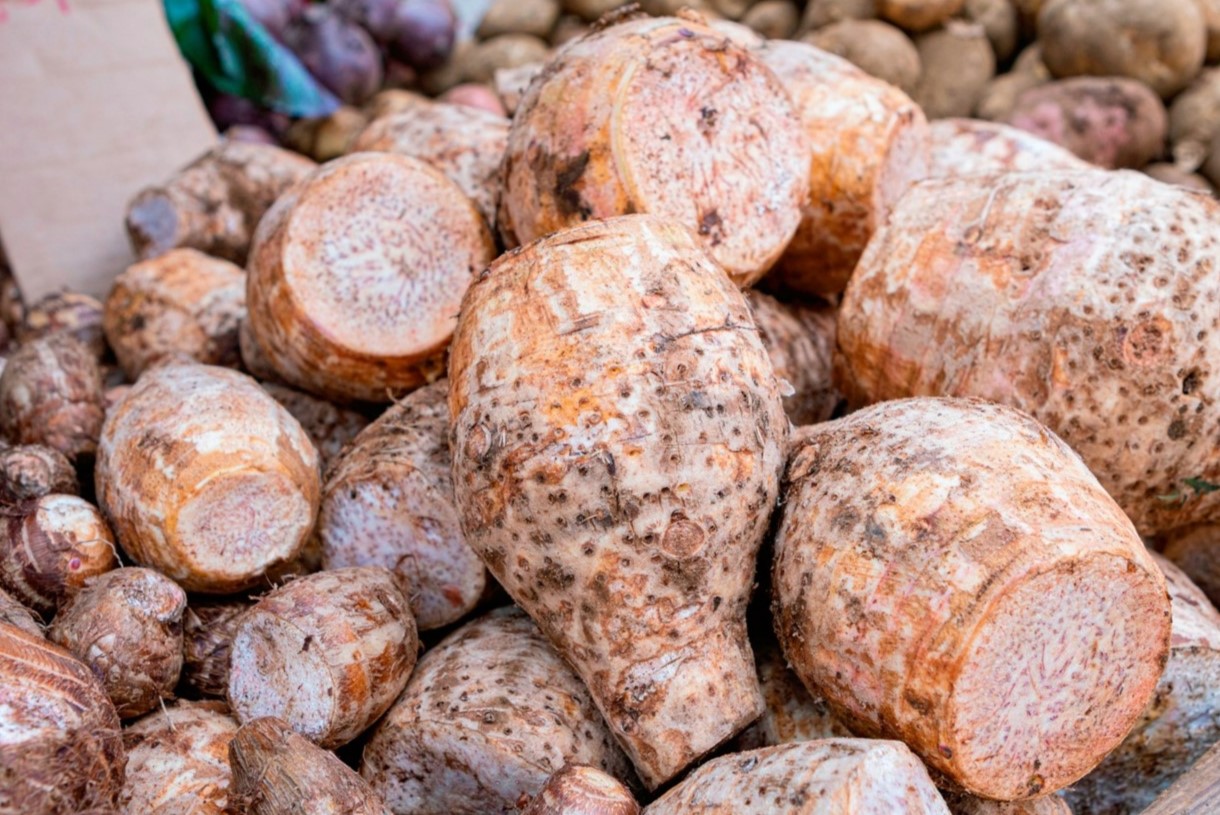
What is Dasheen? Dasheen, also known as taro, is a root vegetable that has been a staple in many cultures for centuries. This starchy tuber is packed with nutrients and offers a unique flavor that can be used in a variety of dishes. Originating from Southeast Asia, it has spread globally, becoming popular in Caribbean, African, and Pacific Island cuisines. Why should you care? Because dasheen is not only delicious but also incredibly versatile. From savory soups to sweet desserts, this root can do it all. Plus, it's rich in fiber, vitamins, and minerals, making it a healthy addition to your diet. Curious to learn more? Let's dive into 20 fascinating facts about this amazing vegetable!
Key Takeaways:
- Dasheen, also known as taro, is a versatile root vegetable packed with fiber, vitamins, and minerals. It's used in traditional dishes, can be made into flour, and even has edible leaves!
- Growing in tropical climates, dasheen takes 6-12 months to mature and offers health benefits like supporting heart health and aiding in weight management. It's also used in traditional medicine and has cultural significance in Hawaii.
What is Dasheen?
Dasheen, also known as taro, is a root vegetable popular in many tropical regions. It's a staple in various cuisines due to its versatility and nutritional value. Let's dive into some fascinating facts about this unique plant.
-
Dasheen is a type of taro. It belongs to the Araceae family, which includes other plants like elephant ears and caladiums.
-
Originates from Southeast Asia. This root vegetable has been cultivated for thousands of years in countries like India, Malaysia, and Indonesia.
-
Goes by many names. Depending on the region, it can be called taro, eddo, cocoyam, or kalo.
Nutritional Benefits of Dasheen
Dasheen is not just tasty; it's packed with nutrients that can benefit your health. Here are some key nutritional facts.
-
Rich in fiber. A single serving provides a significant amount of dietary fiber, aiding digestion and promoting gut health.
-
High in vitamins. It contains vitamins A, C, and E, which are essential for maintaining healthy skin, vision, and immune function.
-
Contains essential minerals. Dasheen is a good source of potassium, magnesium, and iron, which are crucial for heart health and muscle function.
Culinary Uses of Dasheen
This versatile root vegetable can be used in various dishes, from savory to sweet. Here are some interesting culinary facts.
-
Used in traditional dishes. In the Caribbean, it's a key ingredient in dishes like callaloo and dasheen pie.
-
Can be made into flour. Dasheen flour is gluten-free and can be used in baking to make bread, cakes, and cookies.
-
Leaves are edible too. The leaves, known as taro leaves, are often cooked and used in soups and stews.
Growing and Harvesting Dasheen
Growing dasheen requires specific conditions, but it's relatively easy to cultivate in the right environment. Here are some facts about its cultivation.
-
Prefers tropical climates. Dasheen thrives in warm, humid conditions with plenty of rainfall.
-
Takes 6-12 months to mature. Depending on the variety and growing conditions, it can take anywhere from half a year to a full year to be ready for harvest.
-
Grows in wet soil. It often grows in swampy areas or fields with good irrigation.
Health Benefits of Dasheen
Beyond its nutritional content, dasheen offers several health benefits. Here are some notable ones.
-
Good for heart health. The potassium in dasheen helps regulate blood pressure and supports cardiovascular health.
-
Aids in weight management. Its high fiber content can help you feel full longer, making it easier to manage your weight.
-
Supports immune function. The vitamins and antioxidants in dasheen can boost your immune system and help fight off infections.
Fun Facts About Dasheen
Dasheen has some quirky and lesser-known facts that make it even more interesting. Here are a few fun tidbits.
-
Used in traditional medicine. In some cultures, dasheen is used to treat ailments like diarrhea and skin conditions.
-
Can be toxic if not cooked properly. Raw dasheen contains calcium oxalate crystals, which can cause irritation and swelling in the mouth and throat.
-
Has cultural significance. In Hawaii, taro (kalo) is considered sacred and is a symbol of life and creation.
-
Comes in different colors. While most dasheen is white or purple, some varieties have pink or yellow flesh.
-
Can be used as animal feed. In some regions, the leaves and corms are fed to livestock like pigs and chickens.
The Final Scoop on Dasheen
Dasheen, also known as taro, is a fascinating root vegetable with a rich history and many uses. From its origins in Southeast Asia to its role in Caribbean cuisine, dasheen has made its mark worldwide. Packed with nutrients like fiber, vitamins, and minerals, it’s a healthy addition to any diet. Whether you’re boiling, frying, or baking it, dasheen offers a versatile ingredient for various dishes. Its leaves, also edible, provide even more culinary options. Remember to cook it properly to avoid any potential toxins. With its unique flavor and texture, dasheen can elevate your meals and introduce you to new culinary experiences. So next time you’re at the market, consider picking up some dasheen and experimenting in the kitchen. You might just find a new favorite ingredient.
Frequently Asked Questions
Was this page helpful?
Our commitment to delivering trustworthy and engaging content is at the heart of what we do. Each fact on our site is contributed by real users like you, bringing a wealth of diverse insights and information. To ensure the highest standards of accuracy and reliability, our dedicated editors meticulously review each submission. This process guarantees that the facts we share are not only fascinating but also credible. Trust in our commitment to quality and authenticity as you explore and learn with us.


